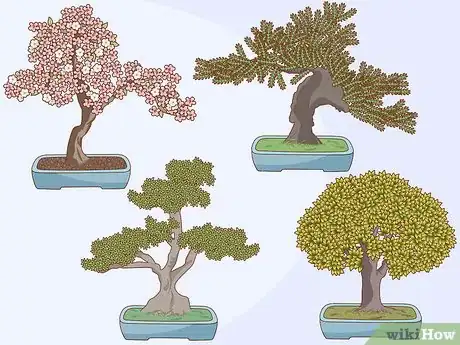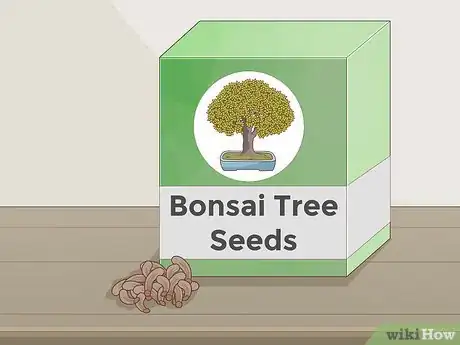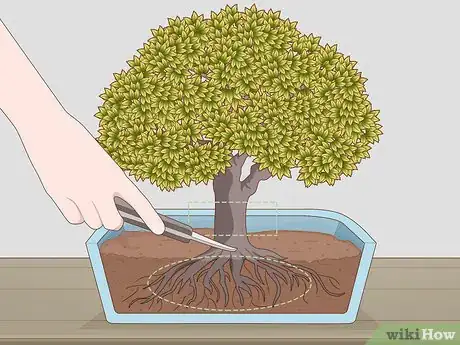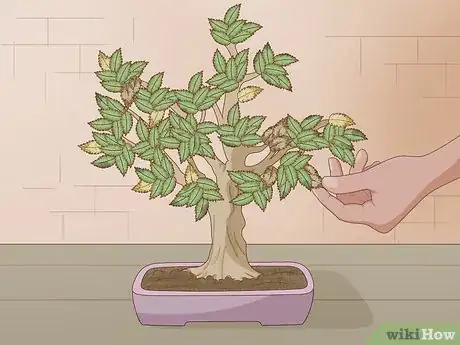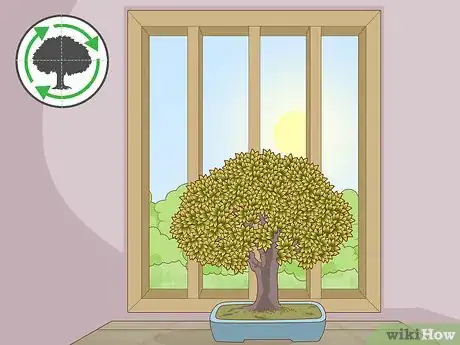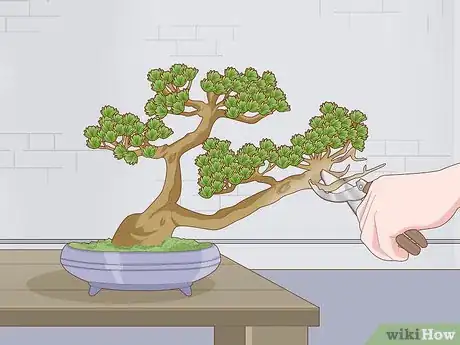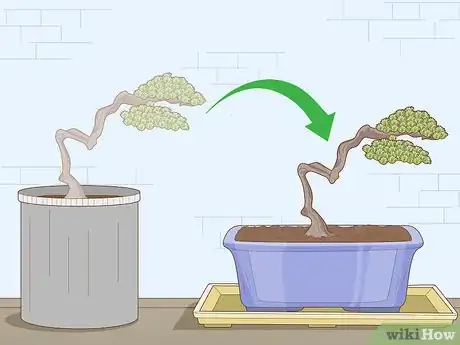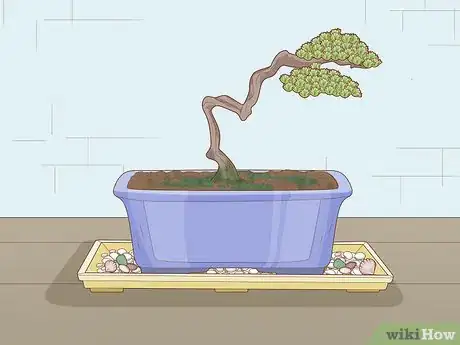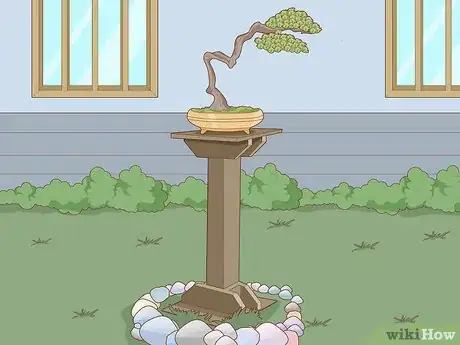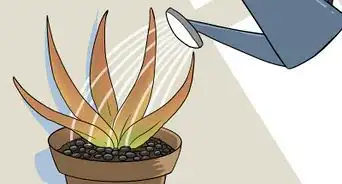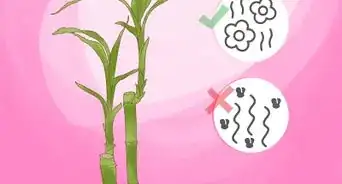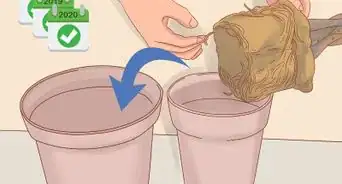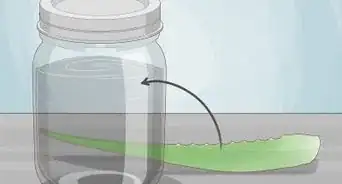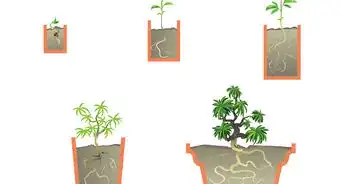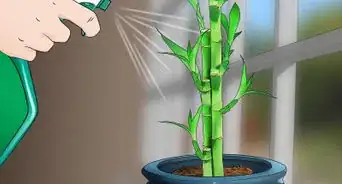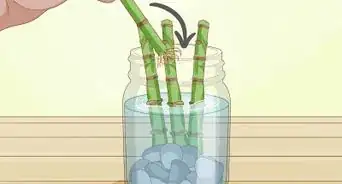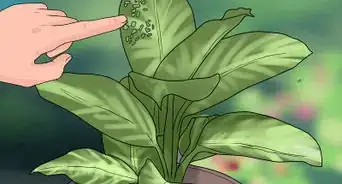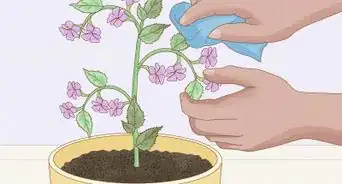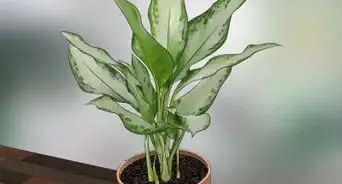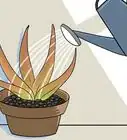This article was co-authored by Andrew Carberry, MPH. Andrew Carberry is a Food Systems Expert and the Senior Program Associate at the Wallace Centere at Winrock International in Little Rock, Arkansas. He has worked in food systems since 2008 and has experience working on farm-to-school projects, food safety programs, and working with local and state coalitions in Arkansas. He is a graduate of the College of William and Mary and holds a Masters degree in public health and nutrition from the University of Tennessee.
wikiHow marks an article as reader-approved once it receives enough positive feedback. This article received 14 testimonials and 89% of readers who voted found it helpful, earning it our reader-approved status.
This article has been viewed 539,681 times.
Bon sai is an art that has been practiced in Asia for many centuries. Bonsai trees are grown from the same seeds as trees that grow to full size. They are grown in small containers and trimmed and trained so that they remain small and elegant. Learn how to grow a bonsai tree, train it in one of the traditional bonsai styles, and care for it so that it stays healthy for many years to come.
Steps
Picking Out a Bonsai Tree
-
1Select a tree species. The type of tree you grow should be reliant on the environment where you'll be keeping it. Your region's climate and your home environment should both be taken into account when you're deciding which species of tree to grow. To be on the safe side, select a species that is indigenous to your part of the world.
- Deciduous species such as Chinese or Japanese elms, magnolias, oaks, and crabapple trees are good selections if you'd like to grow your bonsai outside. Just be sure to pick out a species that can grow to full size in your region.[1]
- If you prefer coniferous trees, junipers, pines, spruces, or cedars all make excellent choices.
- If you want to grow a tree indoors (or if you live in a hot climate), consider a tropical species. Jade, snowrose, and olive trees may be grown as bonsais.
-
2Decide whether to plant the tree from seed. Planting a bonsai tree from seed is a slow but rewarding process. If you plant a tree, you'll have to allow it time to take root and grow strong before you can begin trimming and training. Depending on the species of tree you grow, this could take up to five years. Many find the extra wait and effort to be worth it since seeds are so inexpensive and the grower is able to control the tree at every stage of growth. To grow a bonsai from seed, take the following steps:
- Buy a package of bonsai tree seeds. Soak them overnight before planting them in soil with good drainage and the right nutrient composition for your tree species. Plant the tree in a training container (as opposed to a ceramic display container, which is only used once the tree has been trained and reached maturity).
- Give the planted tree the correct amount of sun, water, and a consistent temperature, again dictated by the specific species of tree.
- Allow the tree to become sturdy and strong before you begin to train it.
Advertisement -
3Consider foraging for a bonsai tree. This method of acquiring a bonsai tree is highly valued, since caring for a bonsai tree you find in the wild requires a lot of skill and knowledge. If collecting a tree that has had its start in nature appeals to you, consider the following factors:
- Select a tree with a sturdy trunk, but one that is still quite young. Older trees won't adapt well to being placed in a container.
- Choose a tree with roots that spread evenly in every direction, rather than growing laterally or entangled with the roots of other trees.
- Dig around the tree and extract a large amount of soil along with the roots. This will prevent the tree from dying of shock when it is moved to a container.
- Plant the tree in a large training container. Care for it according to the needs of the particular species. Wait about a year for the roots to get used to the container before you begin training it.
-
4Choose from among trees that have already been partially trained. This is the easiest way to begin the art of bonsai, but it is also the most expensive. Bonsai trees that have been grown from seed and partially trained have already received a lot of time and care, so they are usually quite pricey. Look online and in local nurseries and plant shops for a bonsai tree to bring home with you.
- If you buy a partially-trained bonsai from a shop, talk with the person who trained it about its specific needs.
- When you bring the bonsai home, give it a few weeks to adjust to the new setting before you begin working with it.
Keeping a Bonsai Tree Healthy
-
1Pay attention to the seasons. Bonsai trees, like all trees and plants, react to the change in seasons. If you're keeping a bonsai tree outside, it will have an even stronger reaction to the change in temperature, sunlight, and the amount of rainfall in the region. In some regions there are four distinct seasons, and in others the seasonal changes are more subtle. In any case, understand the way your tree species reacts to the seasons in your region, and let that information guide the way you care for it.
- Trees lay dormant during the winter; they aren't producing leaves or growing, so they don't use as much nutrition. During this season, watering the tree is about the only care it needs. Avoid trimming it too much, since it won't be able to replace the depleted nutrients until spring.
- In spring, trees begin using the nutrients they stored during the winter to sprout new leaves and grow. Since your tree is in transition during this time of year, it's a good time to repot the plant (adding extra nutrients to the soil) and begin trimming.
- Trees continue to grow during the summer, using up the rest of their stored nutrients. Be sure to water yours well during this period of time.
- In the fall, tree growth slows, and the nutrients begin accumulating again. This is a good time for both trimming and repotting.
-
2Give the tree morning sun and afternoon shade. Your bonsai tree's light needs depends on the species and your climate, but most will thrive in a location that receives morning sun. Turn the tree 90 degrees every few days so all of the tree foliage can receive an equal amount of light.
- Indoor trees may need a light shade cloth over the window during hot, bright summer months.
-
3Protect the tree from extreme temperatures. During the summer, it's fine for the tree to spend the majority of time outside. Bring it inside overnight when temperatures dip below about 40 °F (4 °C). In preparation for the winter, get your tree acclimated to spending more time indoors by moving it inside for a few hours at a time, and increasing the time it spends indoors every day until you bring it inside entirely.
-
4Provide food and water. Fertilize the tree with a special fertilizer meant to keep bonsai trees healthy. When the soil begins to look dusty or dry, water the bonsai. The exact watering frequency depends on the tree species and the season. You may need to provide a little water every day during the summer, but only water once every few days during cold winter months.
Training a Bonsai Tree
-
1Choose a training style. There are several traditional training styles that you can choose for your tree. Some are meant to resemble a tree in nature, while others are more stylistic. There are dozens of bonsai styles to choose from, although the training container you use may limit your options. Here are some of the most popular:
- Chokkan. This is the formal upright form; think of a tree growing strong and straight with branches that stretch evenly around it.
- Moyohgi. This is the informal upright form; the tree has a more natural slant, rather than growing straight upward.
- Shakan. This is the slanting form - the tree looks windblown and striking.
- Bunjingi. This is the literati form. The trunk is often long and twisted, with minimal branches.
-
2Train the trunk and branches. "Training" the young bonsai tree involves gentle bending of the trunk and branches to guide their growth. Wrap the tree in wire to hold it in this position, as described here:
- Use annealed copper wire for coniferous trees, and aluminum wire for deciduous trees. You'll need heavier gauge wire toward the bottom of the trunk, and finer wire for the branches.
- Firmly anchor the wire by wrapping it around a limb once or twice. Do not wrap too tightly, which can damage the tree.
- Wrap the wire at a 45-degree angle, using one hand to steady the tree while you work.
- Trees have different wiring needs depending on the time of year and whether they have just been repotted.
- As time goes on and the tree grows and begins to take on the shape you have designed, you'll have to rewire the tree and continue to train it until it holds the shape you want without the help of wire.
-
3Prune and trim the tree. Use a small pruning tool to strategically clip off leaves, buds, and parts of branches to help the tree grow a certain way. Each time you prune, growth is stimulated on another part of the tree. Knowing where to prune and how often is part of the art of bonsai, and learning how to do it takes a lot of practice.
- When you transfer from a larger container to a smaller one, trim the roots to the shape of the pot. Don't prune the roots until the trunk has reached the desired size.
- Prune in the summer to direct new growth. If you need to remove an entire limb, wait until autumn when the tree is less active. Do maintenance pruning to remove dead branches in late winter or early spring.
- Over-pruning a tree can cause damage, so be careful not to clip away too much.
Displaying a Bonsai Tree
-
1Move the tree to a display container. When you deem the tree's shape to be finished, it's time to move it away from the training container. Beautiful ceramic and wooden containers are available for you to display your bonsai to best effect. Choose one that complements the bonsai style you have created. Be sure to repot it carefully so that the roots are not damaged, and use a container big enough to hold the amount of soil (and nutrients) that are necessary for the tree to stay healthy.
- Choose a container that is as long as your tree is tall. The thicker the trunk of your tree, the deeper the container should be.
-
2Consider adding other features to the container. While the bonsai should be the star of the show, adding a few additional elements can add to the beauty of your bonsai display. Stones and rocks, shells, and tiny plants can be used to make the tree look as though it is part of a forest or beach scene.
- Be sure not to crowd the roots with stones or other objects.
- Adding some moss is a great way to create an intriguing display.
-
3Place the bonsai on a display stand. A beautiful bonsai deserves to be displayed like any other work of art. Choose a wooden or metal display stand and place it against a blank wall, so that the bonsai will stand out. Placing it near a window is a good idea since the bonsai will continue to need sunlight while it's on display. Continue watering, fertilizing, and caring for the bonsai, and your work of art will stay alive for many years.
Expert Q&A
Did you know you can get expert answers for this article?
Unlock expert answers by supporting wikiHow
-
QuestionDo you prune each section of branch to size as it grows, or should you allow the tree to thicken before cutting the branches back?
 Andrew Carberry, MPHAndrew Carberry is a Food Systems Expert and the Senior Program Associate at the Wallace Centere at Winrock International in Little Rock, Arkansas. He has worked in food systems since 2008 and has experience working on farm-to-school projects, food safety programs, and working with local and state coalitions in Arkansas. He is a graduate of the College of William and Mary and holds a Masters degree in public health and nutrition from the University of Tennessee.
Andrew Carberry, MPHAndrew Carberry is a Food Systems Expert and the Senior Program Associate at the Wallace Centere at Winrock International in Little Rock, Arkansas. He has worked in food systems since 2008 and has experience working on farm-to-school projects, food safety programs, and working with local and state coalitions in Arkansas. He is a graduate of the College of William and Mary and holds a Masters degree in public health and nutrition from the University of Tennessee.
Food Systems Expert
-
QuestionCan I start with a native beech tree, either green or copper?
 Andrew Carberry, MPHAndrew Carberry is a Food Systems Expert and the Senior Program Associate at the Wallace Centere at Winrock International in Little Rock, Arkansas. He has worked in food systems since 2008 and has experience working on farm-to-school projects, food safety programs, and working with local and state coalitions in Arkansas. He is a graduate of the College of William and Mary and holds a Masters degree in public health and nutrition from the University of Tennessee.
Andrew Carberry, MPHAndrew Carberry is a Food Systems Expert and the Senior Program Associate at the Wallace Centere at Winrock International in Little Rock, Arkansas. He has worked in food systems since 2008 and has experience working on farm-to-school projects, food safety programs, and working with local and state coalitions in Arkansas. He is a graduate of the College of William and Mary and holds a Masters degree in public health and nutrition from the University of Tennessee.
Food Systems Expert
-
QuestionWhat should I do if my plant gets too dry and brittle?
 Community AnswerBuy it food and water it daily.
Community AnswerBuy it food and water it daily.
References
About This Article
To care for a bonsai tree, pay attention to the seasons, since you will need to care for your plant differently depending on the time of year. During the winter, the tree will be dormant, so it will only need occasional watering, whereas it will need frequent watering during the summer. If you want to replant your bonsai, do so in the spring or the fall, and trim and train during these seasons as well. Place your plant in a location where it will receive sun in the morning and shade in the afternoon, and protect it from extreme heat or cold. To learn tips from our gardening reviewer on how to train a bonsai tree, read on!
